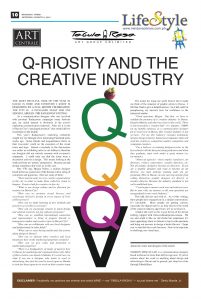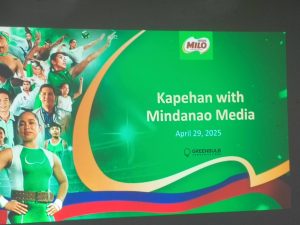
The most fruitful time of the year in Davao is here and everyone I know is delighted by a full-month celebration. The city is a packaged feast for the senses labeled, the Kadayawan Festival.
As a communication designer who was involved with previous Kadayawan campaigns many festivals ago, my initial interest is obviously in the event’s marketing communication materials. After all, it is one of Davao City’s “packaged products” that should deliver its promise to the people.
This year’s Kadayawan’s marketing collaterals caught my eye through a few interesting Facebook posts weeks ago. Some friends and acquaintances threw in their two-cents’ worth on the execution of the visual icons and logo. Almost everybody in the discussions was either an exhibiting artist or art hobbyist, therefore my thoughts did not entirely resonate with everyone’s comments. I could only say that the icons were a decoration and not a design. This meant looking at the work not from an ‘artistic’ perspective. Because art and design sometimes don’t mix as in this case.
One ‘FB’ day, Megan Palero, a motion designer based in Davao, joined one of the threads with a string of comments and questions. Here are some of them:
“There must be unity in every creative organizations in the city in order to make these collective vision to happen. Create a hub for creatives in the city.
“What is our design culture and its direction for creatives in Davao City?
“How can we promote visual literacy and encourage inclusive design in every aspect of lives of Davaoenos?
“How can we make learning of new methods and practices accessible to everyone?
”How can we encourage schools to teach design and cultural research, not just software programs?
“How can we establish international connection and representative to bring in projects directly to homegrown studios and creatives here in Davao City?
”How can we collaborate with our local designers and professionals in other fields?
“When can we start having intellectual discussions about design in Davao?
”How can we educate other creatives and local businesses here on the intellectual properties creation?
“How can we give value and protection to intellectual properties?
”There is a headquarters of (name of agency) here in Davao for marketing and communications only. Most of their creatives are based in Manila. It’s weird case cos what if you are a designer who wants to work in advertising, they feel the need to travel again to Manila to look for these agencies to work on their creative team.

The actual list made me scroll forever but it made me think of the situation of graphic artists in Davao. I felt that I had to give a helpful answer. So, I did, and I’m paraphrasing my answers here for usefulness to the interested reader:
“Good questions, Megan. But first, we have to validate the presence of a ‘creative industry’ in Davao. Imagine Manila, and other key cities in the world. There is not necessarily a ‘creative hub’ – it’s ‘industry.’ IMHO (in my humble opinion), as a communication designer for 27 years now in Davao, that ‘creative industry’ is not yet here. For me, this ‘industry’, includes institutions (proper design schools), businesses/companies (that will need the creatives), competitive market, competitive and competent creatives.
“I’m a believer in training designers-to-be in the best schools with the best practising professors and when they graduate, must work under a great mentor (or, tor-mentor).
“About ad agencies – these employ visualizers, art directors, writers, copywriters, creative directors, etc. Not all graphic designers become art directors. If you are a graphic designer and want to become an art director, you must undergo training until you get promoted. Here in Davao, no one can stop anyone from calling themselves graphic designer, art director or creative director. Because the industry standard is not well-established here.
“I can begin to answer each now and end next year. But to start with, my answers to all your questions are encapsulated in one word: Industry.”
This talk did not end with us. As of this writing, three people have engaged me in a similar conversation. It’s inevitable. More people are getting curious, especially the digital natives, as they discover the world of the creative industry apart from ‘art’ as we know it.
A Q&A talk such as this is just the tip of the durian iceberg, topped with fruits-in-Kadayawan-season. We see and smell it like an old cliché but sometimes it‘s more appetizing when we labor to top it with questions and bring out answers to design a better flavor. I hope you’ve read this far to ask for more. Now is the ripe time to challenge our visual taste.
About the writer and designer of the article:
Marion Descallar is a communication designer based in Davao for more than half her age now. If you’re curious about her work or anything about design and advertising in Davao and in general, just drop her a line through Tabula Rasa.
DISCLAIMER: ‘Incidently, my opinions are entirely and solely MINE — not “TABULA RASA’s” — so just blame me.’ Dinky Munda. Jr.


